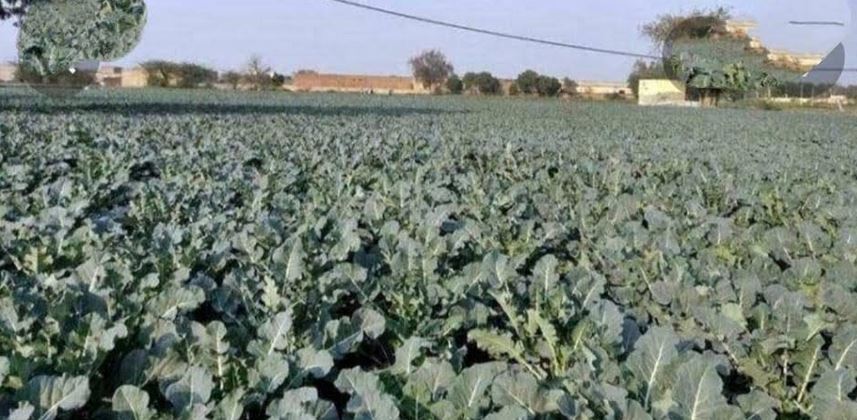News Flash
News Flash

By Md Aynal Haque
RAJSHAHI, Feb 11, 2025 (BSS) - Muktar Ali, 50, a farmer of Hatibandha area in Godagari upazila, has cultivated broccoli on around one bigha of land and he's harvesting this cash crop for the last couple of days with satisfactory yield and market price.
"I have been selling broccoli since the beginning of harvest," Ali said, adding broccoli is more profitable than some other contemporary vegetables like cauliflower and cabbage.
He has also gained success from his previous year's farming on 10 kathas of land.
"I had around 450 plants on one bigha of land this year," said Hasim Uddin, 37, another farmer of Imamganj village under the upazila, adding that he is making profits from vegetable farming.
Farming of broccoli, a non-conventional winter vegetable, has brought diversification to both the wholesale and retail kitchen markets in the region for the last couple of years.
Simultaneously, it has gained popularity as many of the grassroots farmers are getting more income from the vegetable cultivation compared to other conventional ones in the region, including its vast barind tract.
Acreage of the vegetable is rising gradually by dint of its lucrative market price and gradually rising demands of the consumers in general.
Like the previous couple of years, the newly harvested vegetable along with other ones has appeared in the local markets abundantly at present making both the sellers and buyers happy.
As a whole, the vegetable has brought a diversification in the kitchen markets besides a new dimension in the local economy, experts' sources said.
Talking to BSS, Sub-Assistant Agriculture Officer Atanu Sarker said many of the farmers are seen showing their interests towards broccoli farming as its demand is gradually increasing.
Many of the grassroots farmers are cultivating the seasonal cash crop in the area as they are getting a better market price of their yield compared to many other crops.
"I'm heavily satisfied with getting the seasonal vegetables regularly since the winter season began," said Monimul Haque, a small businessman of Haragram area in Rajshahi city. Currently, he buys broccoli at Taka 10 to 15 per piece.
Muhammad Noyan, a vendor of Nandangachhi village under Charghat upazila of the district, has been selling the vegetable more or less every day for the last around two months. Demand for the vegetable 'broccoli' has increased to a greater extent, he added.
Additional Director of Department of Agricultural Extension (DAE) Motaleb Hossain said initiative has been taken to expand the farming of the cash crop among the farmers in general.
He said broccoli is a winter vegetable with high nutritional contents. It is full of vitamins, minerals and antioxidants.
It looks like cauliflower but its colour is green and not milky white like cauliflower. Soil condition and winter weather in the region are favourable for broccoli cultivation.
Side by side with other conventional winter vegetables, the cash crop is seen appearing in the local markets everyday bringing diversity in the vegetable markets both wholesale and retail levels. The non-conventional winter vegetable has started turning into a conventional one.
He said there is a bright prospect of broccoli farming commercially in the country's northwest region. Taking advantage of the situation, farmers are seen showing their interest in cultivating broccoli as a result of better output and market price.
Agriculturist Hossain added that the vegetable could easily be cultivated in the normal farming field as it is more tolerable to high-temperature than cauliflower and cabbage. Nutritive value of the crop is more than any other winter vegetables including cabbage and cauliflower, he added.
Dr Alim Uddin, former chief scientific officer of Bangladesh Agriculture Research Institute, said broccoli is gradually becoming popular among the urban people and the Chinese restaurants together with the grand hotels. They are using broccoli for making soup and other delicious foods.
The farming method was almost similar to the cabbage and cauliflower. At least 40,000 to 50,000 plants could be produced per hectare in 65-70 days, he said.